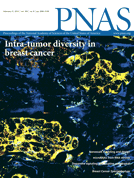导读:近日丹麦哥本哈根大学的研究人员设计、合成了一种用于治疗中风导致的脑损伤的新型化合物,并称该化合物在动物模型上的研究数据表明其将中风后的大脑死亡区域减少了40%。研究人员已经为此化合物申请了专利。

中风
近日丹麦哥本哈根大学的研究人员设计、合成了一种用于治疗中风导致的脑损伤新型的化合物,并称该化合物靶向结合大脑蛋白的效率相比目前的测试药物提高了1000倍。相关研究成果发表在《美国科学院院刊》(PNAS)上。
中风会导致大脑突然释放大量的谷氨酸盐(一种激活信号复合物),从而过度激活周围健康组织中的受体,导致细胞内钙离子水平急剧增高,随后激起毒性链式反应导致细胞死亡。科学家们认为这一过程是中风后发生脑损伤的重要原因,因此他们一直致力于寻找能够限制这种细胞死亡的化合物。
过去研发治疗中风脑损伤的药物主要是针对性阻断大脑信号复合物,如谷氨酸等的受体。尽管能保护受体免于过度激活,然而可惜的是它也会影响受体的正常功能,引起难以接受的副作用。近年来科学家们对另一种替代策略的兴趣激增:开发的药物不会直接影响受体,而是作用于细胞中的受体与蛋白互作。这是哥本哈根大学化学研究团队的重要研究项目。
本次研究人员之一,哥本哈根大学健康与医疗卫生学院药物化学家Anders Bach 指出,他们主要研究的是破坏NMDA受体和胞内蛋白PSD-95之间的相互作用。虽然还有其他的一些科学家也对这一领域感兴趣——有一个研究团队已开发出了一种化合物,当前已进入临床开发阶段。但是,他们考虑的是如何能够设计出更有效的新型化合物。
为了找到能分离PSD-95蛋白和NMDA受体的化合物,研究人员开发了一种方法来检测化合物与PSD-95结合程度。他们建立了一种方法——利用荧光偏振(fluorescence polarisation)分析,在很长一段时间内成功地开发了大量的有效的化合物。Anders Bach博士补充道科学家们曾经投入大量的资源,采用复杂的生物物理方法去了解化合物如何准确地与PSD-95结合。这也使他们更详细地了解了导致高水平活性的分子机制。
Anders Bach博士说:“在动物模型上的研究数据表明我们设计和合成的新化合物将中风后的大脑死亡区域减少了40%。此外,我们还证实新化合物比当前用于临床实验的测试药物生物效力要强得多。”
生物测试的结果也表明新型化合物在动物模型中具有高度的生物活性,并能够通过血脑屏障。“我们的化合物不仅能够通过血脑屏障,有意思的是,它还能改善中风动物的运动功能,例如,提高了小鼠爪子的握力,”Anders Bach说。
研究人员为此化合物申请了专利。Anders Bach希望新化合物能够为开发出供应全球的新药奠定基础,不过他同时也强调这可能是一个漫长而复杂的过程。

A high-affinity, dimeric inhibitor of PSD-95 bivalently interacts with PDZ1-2 and protects against ischemic brain damage
Anders Bach, Bettina H. Clausen, Magda Møller, Bente Vestergaard, Celestine N. Chi, Adam Round, Pernille L. Sørensen, Klaus B. Nissen, Jette S. Kastrup, Michael Gajhede, Per Jemth, Anders S. Kristensen, Patrik Lundström, Kate L. Lambertsen, and Kristian Strømgaard
Inhibition of the ternary protein complex of the synaptic scaffolding protein postsynaptic density protein-95 (PSD-95), neuronal nitric oxide synthase (nNOS), and the N-methyl-D-aspartate (NMDA) receptor is a potential strategy for treating ischemic brain damage, but high-affinity inhibitors are lacking. Here we report the design and synthesis of a novel dimeric inhibitor, Tat-NPEG4(IETDV)2(Tat-N-dimer), which binds the tandem PDZ1-2 domain of PSD-95 with an unprecedented high affinity of 4.6 nM, and displays extensive protease-resistance as evaluated in vitro by stability-measurements in human blood plasma. X-ray crystallography, NMR, and small-angle X-ray scattering (SAXS) deduced a true bivalent interaction between dimeric inhibitor and PDZ1-2, and also provided a dynamic model of the conformational changes of PDZ1-2 induced by the dimeric inhibitor. A single intravenous injection of Tat-N-dimer (3 nmol/g) to mice subjected to focal cerebral ischemia reduces infarct volume with 40% and restores motor functions. Thus, Tat-N-dimer is a highly efficacious neuroprotective agent with therapeutic potential in stroke.
文献链接:https://www.pnas.org/content/early/2012/02/14/1113761109.short?rss=1








